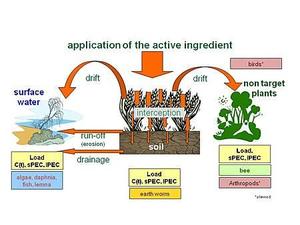DEXiPM, originally developed by researchers at INRA, France’s National Institute for Agricultural Research, has a long history in the PURE and ENDURE projects. During ENDURE, DEXiPM was used to conduct ex ante qualitative assessments of the sustainability of innovative cropping systems. This was a major advantage for ENDURE’s case study teams as they considered the large array of options available for creating more sustainable arable and orchard systems.

The PURE project took DEXiPM to the next step, creating a multi-criteria assessment tool which could produce not only ex ante results, but ex post assessments too. DEXiPM played a central role in PURE, as the researchers explain: “For each chosen key European farming system (arable, field vegetables, protected vegetables, grapevine and pomefruit), a group of researchers and advisers designs prototypes of cropping systems with the objective of reducing pesticide use.
“Their performances are assessed with models and compared to the ones of currently widespread systems, before their test in field (ex ante ). In this way, it is possible to adjust/improve the prototypes that are then implemented on experimental stations and commercial farms.
“After a test in the field, another assessment (ex post ) is carried out and the results are exploited. These results may be used as an input for developing new knowledge and tools for IPM, as well as for adjusting the prototypes to be tested in the field.”
 Different entry routes for plant protection products. Copyright: JKI
Different entry routes for plant protection products. Copyright: JKI
Versions of DEXiPM for ex post assessment (arable crops, field vegetables and pomefruit) are now available under licence agreements for research purposes, as well as ex ante models (arable crops, field vegetables, grapevine and protected vegetables).
Other tasks accomplished during PURE’s work on IPM design and assessment methodology, were an exploration of the capacities of novel model-related tools and approaches to address problems in IPM design.
This work produced, for example, a report on various optimisation methods for the design of IPM solutions, a generic platform to develop ‘XPEST’ models, based on the structure of WHEATPEST, to help perform the diagnosis of yield losses caused by injury profiles of various crop productions, and methods to scale up assessments of IPM solutions at the farm and regional scales.
The latter involved researchers developing a novel web-based tool for environmental risk assessment, considering regional environmental and field conditions based on the methodology of the SYNOPS risk indicator model.
The aim was to develop an application in order to make the SYNOPS indicator available as an online tool which can be easily used by farmers, advisers and stakeholders for risk analysis and comparison of pesticide application strategies under region-specific environmental and field conditions.
SYNOPS is currently used as a risk indicator in the German action plan. You can read more here on the German Ministry of Food and Agriculture website.
For more information: